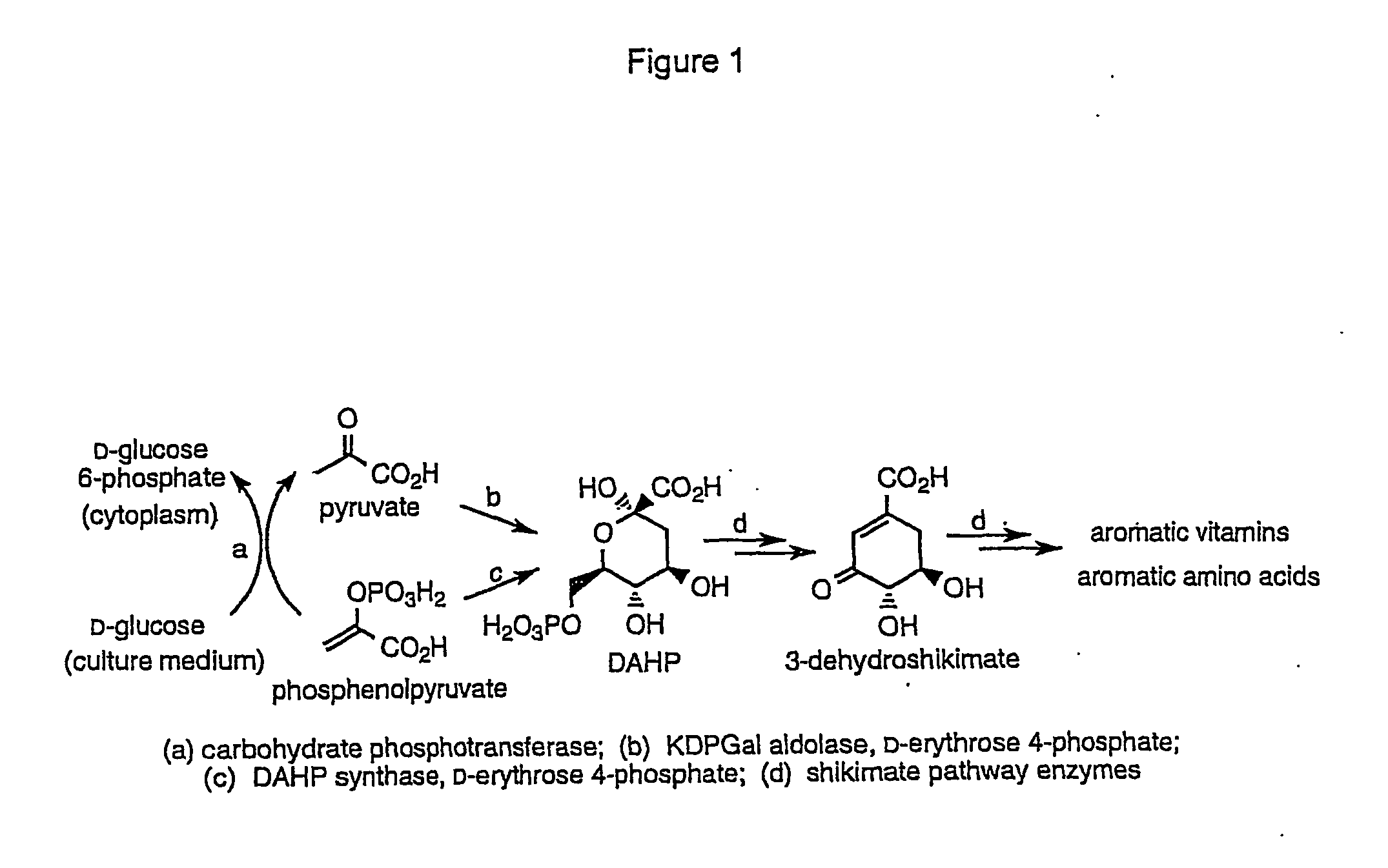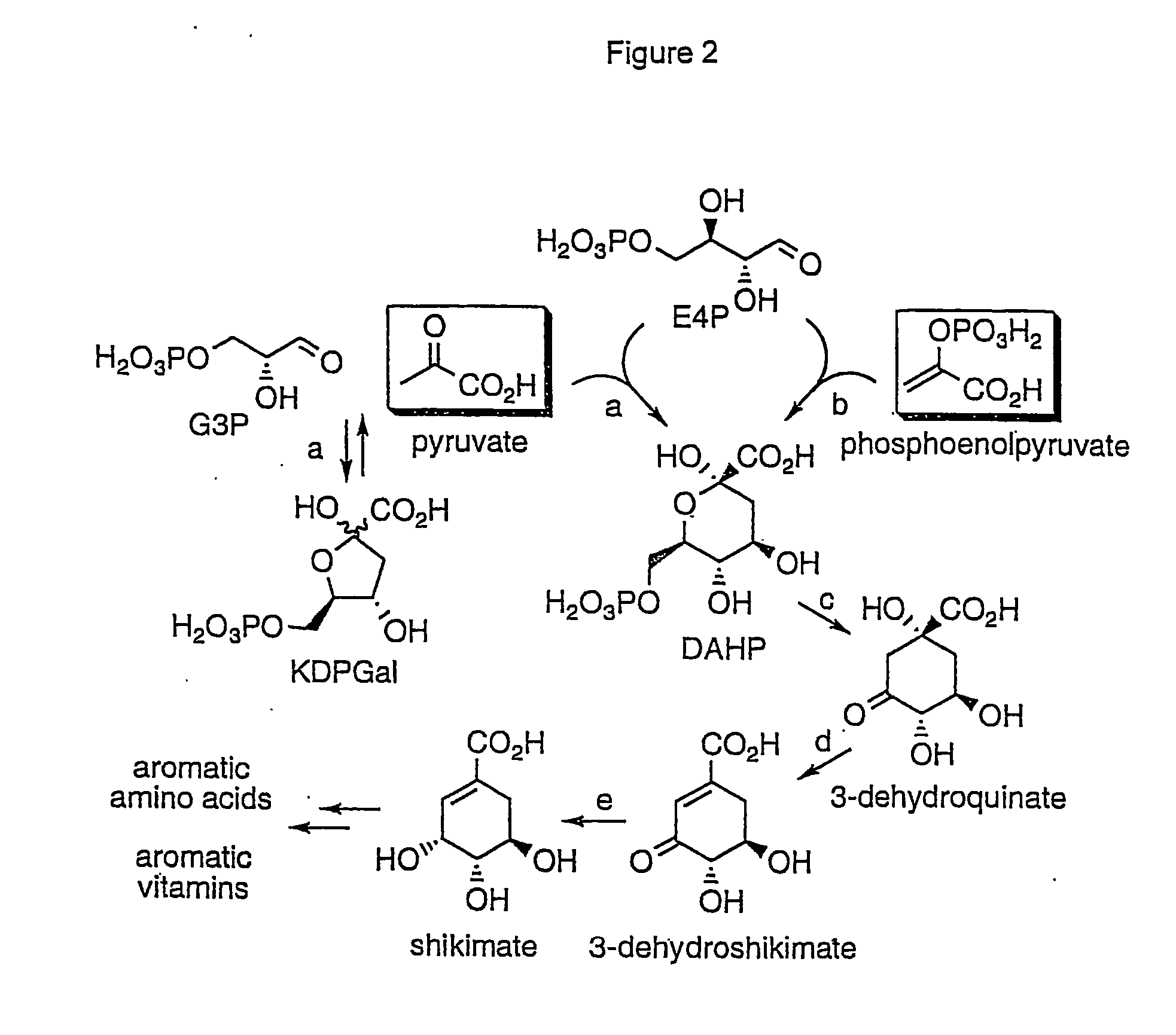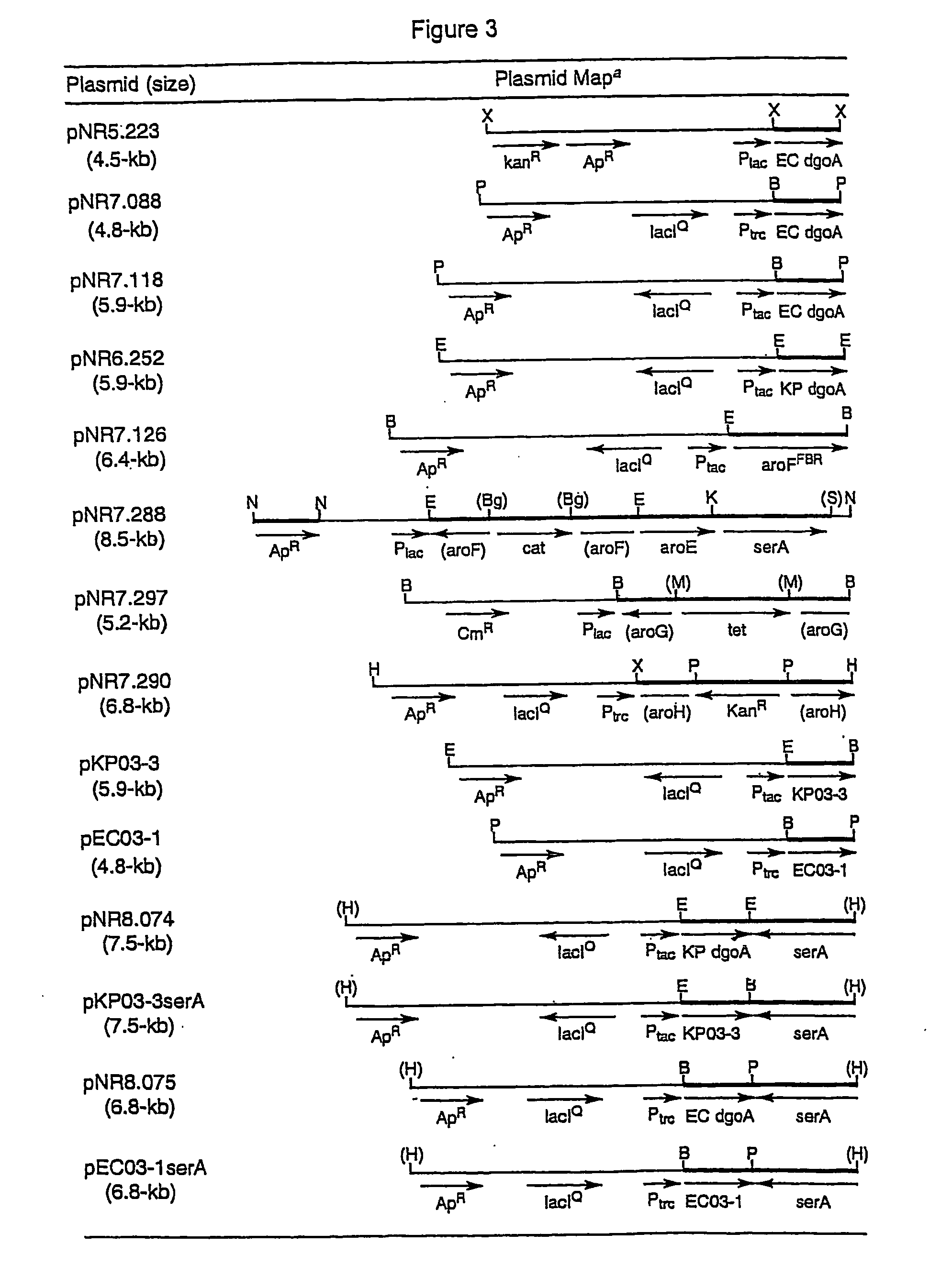Methods and materials for the production of shikimic acid
a technology of shikimic acid and microbial synthesis, applied in the field of methods, materials and organisms for the production of shikimic acid, can solve the problem of limiting the concentration and yield of natural products microbially synthesized through the shikimate pathway
- Summary
- Abstract
- Description
- Claims
- Application Information
AI Technical Summary
Benefits of technology
Problems solved by technology
Method used
Image
Examples
specific example 1
Purification of KDPGal Aldolase from E. coli and In-Vitro Biosynthesis of 3-Dehydroshikimate
[0072]E. coli AB3248 / pNR5.223 is grown in LB medium containing 50 μg / mL ampicillin at 37° C. IPTG (isopropyl-beta-D-thiogalactopyranoside) is added to a final concentration of 0.2 mM when OD600 reached 0.5. The cells are grown for an additional 6 h, and pelleted by centrifugation (4200 g, 10 min). The cells are washed with 0.9% NaCl solution once and suspended in 20 mM KH2PO4, pH 6.5 with 1 mM PMSF. Disruption of the cells is achieved by two passages through a French pressure cell (16000 psi; 110.3 MPa). Cell debris is removed by centrifugation at 48000 g for 20 min. The resulting crude cell-free lysate is first treated with protamine sulfate and solid (NH4)2SO4, then applied to a DEAE-cellulose (Whatman) column. The column is washed with a gradient mixture of buffer B (20 mM KH2PO4, 50 mM KCl, pH 7.5) and buffer C (20 mM KH2PO4, 400 mM KCl, pH 7.5). Fractions containing KDPGal aldolase are...
specific example 2
Cloning and Characterization of dgoA Genes from Other Bacterial Sources.
[0074]E. coli wild-type dgoA-encoded KDPGal aldolase showed weak activity toward accepting D-erythrose 4-phosphate as a substrate. KDPGal aldolases from other bacterial sources might have higher activities for catalyzing the condensation of pyruvate with D-erythrose 4-phosphate. Obtaining dgoA genes from other bacteria would also enable a cross-species DNA family shuffling that has been reported to improve enzyme performance rapidly. Although KDPGal aldolase activities have been identified in Pseudomonas saccarophila, Pseudomonas cepacia, Caulobacter cresentus, Azotobacter vinelandii, Rhizobium meliloti, Gluconobacter liquefaciens, and nonpathogenic Mycobacteria, none of these dgoA gene sequences was known except in Caulobacter cresentus in which the genomic sequence has been obtained. See: Crameri, A. et al., Nature 1998, 391, 288-291; Kurn, N. et al., J. Bacteriol. 1978, 135, 517-520; Wong, T. Y.; Yao, X., A...
specific example 3
Directed Evolution of KDPGal Aldolases
[0079] The dgoA genes of E. coli, K. pneumoniae, and S. typhimurium were each evolved by use of error-prone PCR and DNA shuffling. E. coli dgoA and K. pneumoniae dgoA and were subjected to two rounds of error-prone PCR mutagenesis followed by one round of DNA shuffling. Identification of increased activity relative to condensation of pyruvate with D-erythrose 4-phosphate was based on a selection that increased in stringency with each round of directed evolution.
[0080] The activity of the resulting KDPGal aldolases in catalyzing condensation of pyruvate and D-erythrose 4-phosphate was investigated in E. coli CB734, which lacks all isozymes of DAHP synthase. Thus, growth of E. coli CB734 on glucose-containing minimal salts medium required supplementation with L-phenylalanine, L-tyrosine, L-tryptophan and aromatic vitamins (entry 1, Tables 2-4, below).
TABLE 2Directed Evolution of E. coli KDPGal aldolase.EntryConstructaM9bM9cFdYFdYFWdYFWvitd1E....
PUM
| Property | Measurement | Unit |
|---|---|---|
| Fraction | aaaaa | aaaaa |
| Fraction | aaaaa | aaaaa |
| Electric potential / voltage | aaaaa | aaaaa |
Abstract
Description
Claims
Application Information
 Login to View More
Login to View More - R&D
- Intellectual Property
- Life Sciences
- Materials
- Tech Scout
- Unparalleled Data Quality
- Higher Quality Content
- 60% Fewer Hallucinations
Browse by: Latest US Patents, China's latest patents, Technical Efficacy Thesaurus, Application Domain, Technology Topic, Popular Technical Reports.
© 2025 PatSnap. All rights reserved.Legal|Privacy policy|Modern Slavery Act Transparency Statement|Sitemap|About US| Contact US: help@patsnap.com



